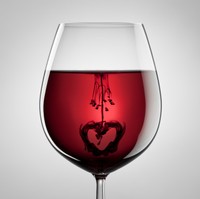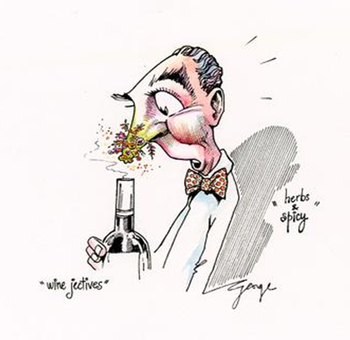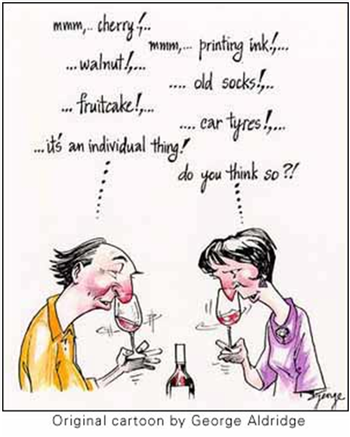Blog
What does your wine of choice say about you on Valentines Day?

"What your wine says about you" - Valentine's Day Style!
Some of us look forward to V alentine's Day all year round while to other's it is just another day in February. We think that your personal wine choice may reflect your approach to this festive holiday. What do you think??
Champagne - You want your special someone to kidnap you and...Fifty Shades of Grey...enough said...
Chardonnay - You know what you want and on Valentine's Day that means nothing serious. In your mind, Valentine's Day is just another day. For you it includes a bottle or maybe even two of your favorite Chardonnay to loosen up the mood.
Rosé - Is it summer yet? You just want to cuddle up beside your special someone and watch the sunset on the beach near a bon fire.
Pinot Noir - You love roses just as much as you love wine. If you get both on Valentines Day you’ll be in heaven.

Cabernet Sauvignon - You want to get away, but not to far. A dusty trail ride on the ranch is what you're looking for.
Malbec - Valentines Day for you is a day to spice things up in your relationship. You want to dust off the cob webs and give your lover a little something extra this year.
Petit Sirah - Forget the flowers, the cards, and all the other foo foo stuff. You just want to turn down the lights and enjoy a nice dinner fire side with the one you love most.
Whatever your preference on wine, we wish you a Happy Valentine's Day from all of us at Dawn's Dream Winery. Cheers!
Kameron's Tasting Tips & The 5 S's
Sight - With your eyes you can find several different aspects of a wine before even smelling or tasting. You'll want to look for any flaws and or any imperfections. In a way it's similar to checking the quality of a diamond for flaws. Look for sediment, carbonation, and off colors. When examining the color of a wine, note if the wine is bright, dull, or dark while also checking the clarity. White wines typically range from pale green to yellow to deep golden brown while red wines typically have a much larger range from younger wines with a raspberry hue all the way to older wines with a mahogany hue. Next view the viscosity or thickness of the wine. You can achieve this by swirling the glass and then watching the tears fall down the glass. The slowness of the tears sliding down the glass and the thickness of the tears can help determine a wine’s range of alcohol. With thinner faster sliding tears a wine will be lower in alcohol. It's a common misconception that you can tell the quality of a wine by its "legs". Those so called legs are pure ethanol or alcohol, not a factor of overall quality or superiority.

Swirl - Swirling your glass will ungulate the wine allowing oxygen to penetrate the wine. This expels the vapors, evaporating from all sides of the glass, and coats all sides of the glass to release the aroma and bouquet of the wine.
Smell - Smelling is the most important part that some mistakenly skip completely or rush through. Studies have shown that 90% of tasting comes from the sense of smell. So use your sniffer and take it through these few steps. First, check for flaws in the nose such as a wine that has become corked or oxidized. This means a wine has been contaminated or “gone bad”. For example, does it smell damp, soggy, wet or like rotten cardboard? Next, test the intensity of your wine. If you can smell the wine a few feet from your nose you can say it has powerful nose. A modest nose will not be as intense and a delicate nose will be very mellow and soft. A powerful nose does not indicated a higher quality wine as all varietals are different, it depends on what you prefer. Finally, check for fruit, non fruit, and earthy characteristics on the nose. The descriptors you can use to describe the nose of a wine are endless and can range from apple to pomegranate, and from licorice to leather.

Sip – One of the first sensations you will start to gauge while sipping is the amount of sweetness present in a wine. Ask yourself if the wine is more sour and sharp like a lemon or very sweet like grandmas cherry pie. If a wine is not sweet is considered to be a “dry” wine. Next you can decide the body of the wine. We’re not talking about the shape of the wine, but the way it feels. A full bodied wine will fill your mouth with good acidity and supple tannins while a light bodied wine will seem much smoother. Your mouth will react differently to acid and tannins in your wine. An acidic wine will make your mouth water. The more your mouth salivates, the more acidic the wine. Tannins in wine will leave a feeling of dryness at the finish. A wine that gives you a chalky feeling on your teeth or a slight cotton mouth is a very tannic wine.
Spit - We all love to indulge a little every now and then, but note that swallowing the wine will almost immediately start to impair your senses. When tasting at several different places in one day its best to taste and spit. You will still get the full sense and taste of a wine but it will allow you to make more accurate deductions of all the wines you will taste. Don’t worry…all of the sommeliers and other wine pros are spitters too!
References - Aldridge, George. Wine Cartoon Pictures. Digital image. Wine Cartoon Pictures. N.p., n.d. Web.
You know you want to
Sign Up Here...
to receive the latest news, information on new releases,
as well as special offers just for those on our list.
*We never share your information with anyone!